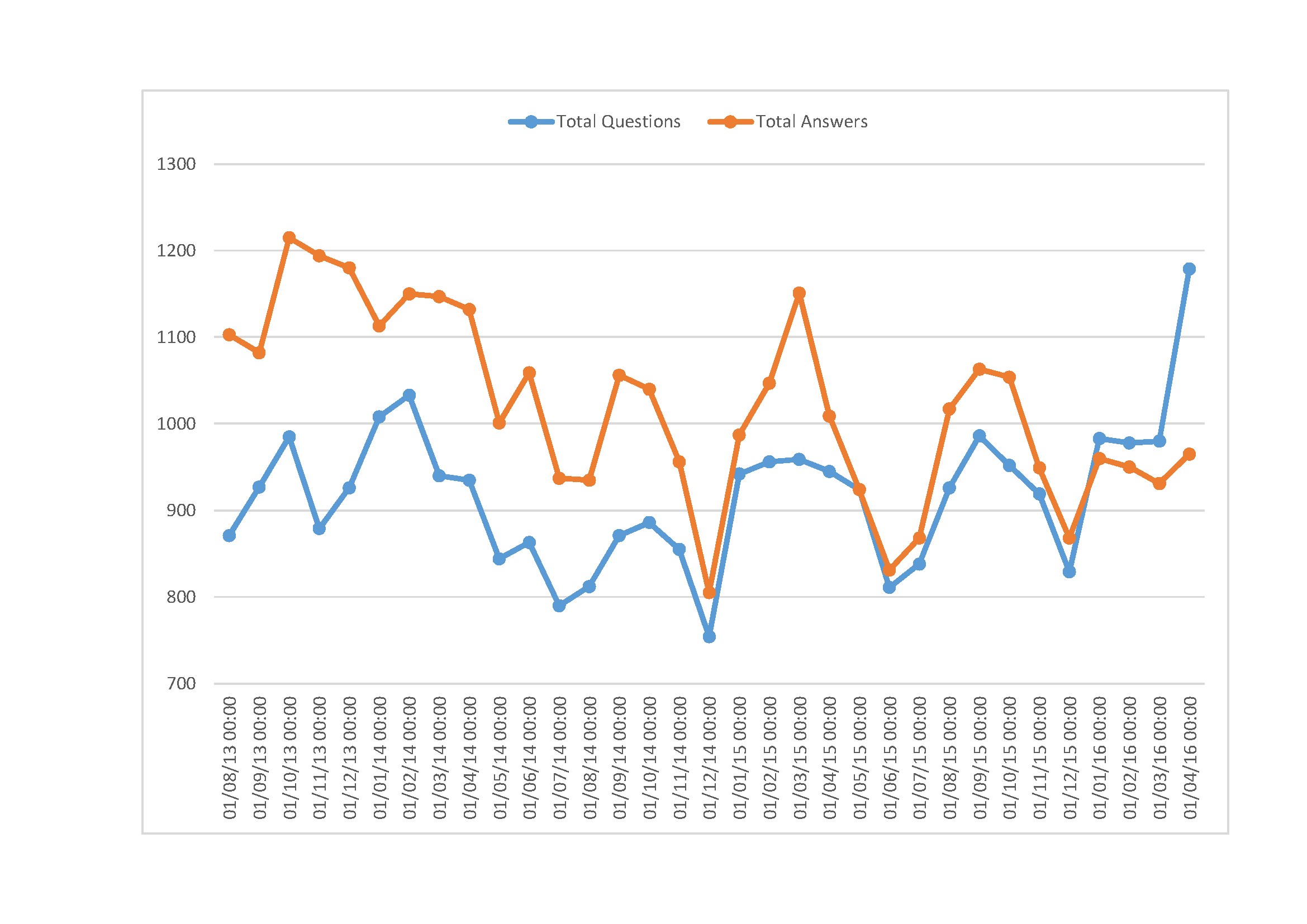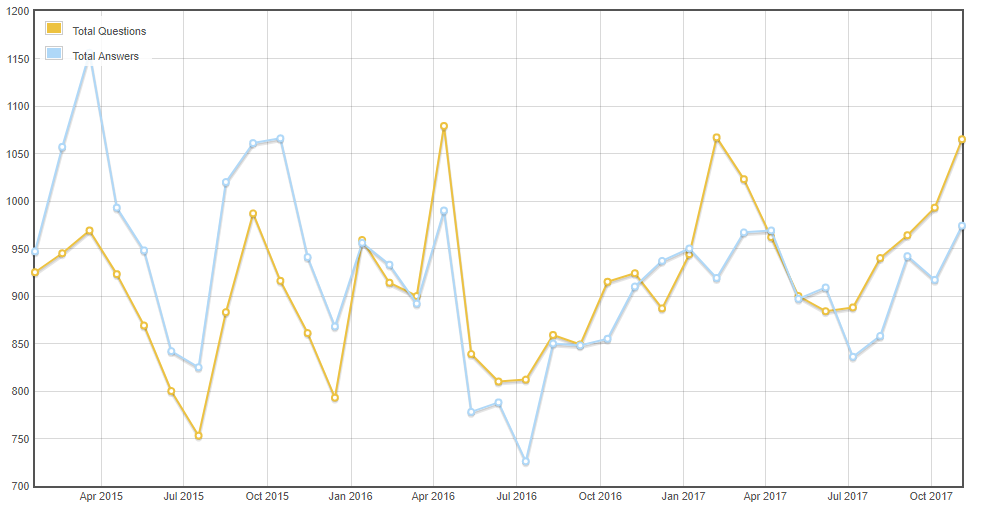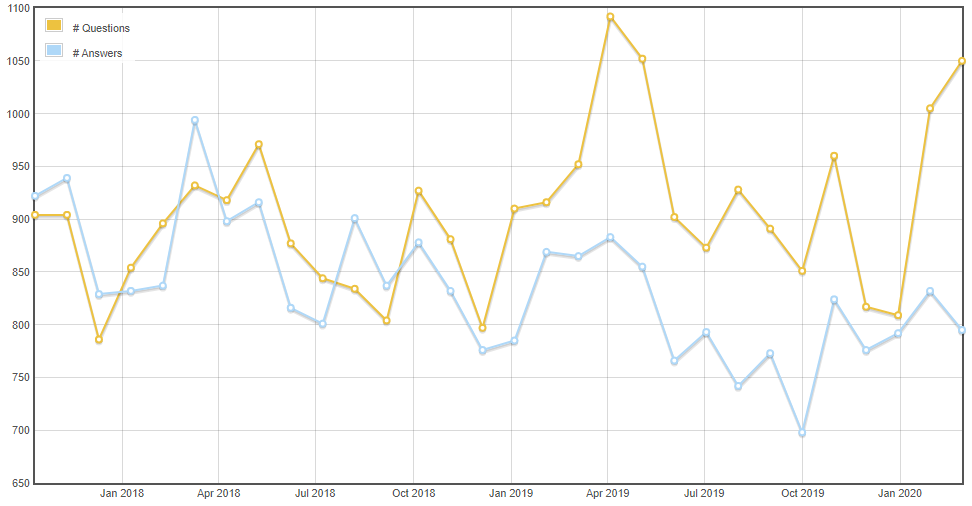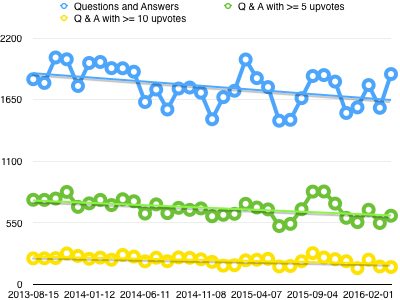Might be offtopic, but again maybe not. In any case this is not really answering the question, just some additional information (seemingly) related. I've rerun the query about total questions and answers together for the period indicated (could not run it for longer time stretch). What I've got is this:

Seems like for the first time in 2016 the total number of questions has exceeded the total number of answers.
I believe one might conclude that the number of questions actually grows, although more slowly than the number of answers drops.
And here is an update for 2015 - 2017. I believe it rather confirms than contradicts the suggestion that there is a tendency for a combination of an upward trend in questions and downward trend in answers...

...And now one more update. I dare claim that the trend is more and more apparent! Can anybody tell me how to evaluate actual statistical significance of it?





